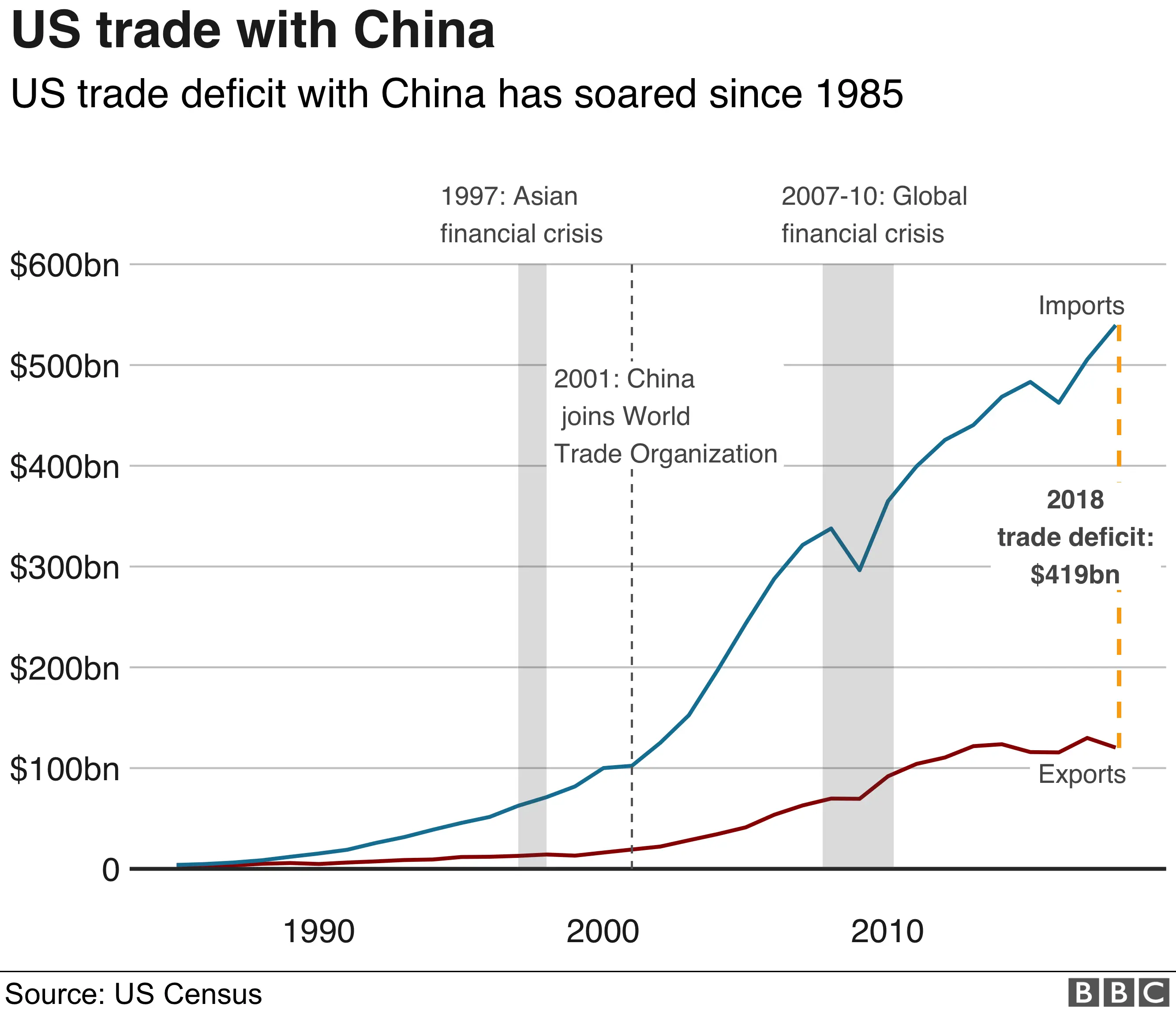Trump's 30% China Tariffs: Extended To Late 2025?

Table of Contents
The Original Imposition of the 30% Tariffs
The Trump administration implemented a series of tariffs on Chinese goods starting in 2018, escalating the existing trade tensions between the two economic superpowers. The stated goals were multifaceted: to reduce the US trade deficit with China, protect American intellectual property from theft, and level the playing field for American businesses. These tariffs, reaching as high as 30% on certain goods, targeted a wide range of products.
Key affected product categories included:
- Consumer electronics (smartphones, laptops, televisions)
- Textiles and apparel
- Furniture and home goods
- Machinery and industrial equipment
The immediate economic impact was significant:
- Increased prices for consumers: Tariffs directly increased the cost of imported goods, leading to higher prices for consumers. This contributed to inflationary pressures across the US economy.
- Disruptions to supply chains: Businesses faced delays and increased costs in sourcing goods from China, leading to supply chain bottlenecks and shortages.
- Retaliatory tariffs from China: China responded with its own tariffs on US goods, creating a tit-for-tat trade war that harmed both economies.
Current Status and Potential Extension to 2025
While some tariffs have been modified or removed under the Biden administration, many of the 30% tariffs on Chinese goods remain in effect. The potential extension of these tariffs to late 2025 is a subject of ongoing debate and uncertainty.
Several political and economic factors influence the decision:
- Biden administration's trade policy: The Biden administration has adopted a more nuanced approach to trade with China, focusing on strategic competition rather than outright trade wars. However, concerns about national security and human rights continue to fuel tensions.
- Ongoing tensions with China: Geopolitical tensions between the US and China, encompassing issues beyond trade, complicate any effort to de-escalate the trade dispute. These tensions influence the political feasibility of lifting or extending the tariffs.
Arguments for and against extension are strongly debated:
- Arguments for extension: Proponents argue that tariffs are necessary to protect American industries and jobs, and to pressure China on issues such as intellectual property theft and unfair trade practices. They point to certain sectors that have seen increased domestic production as a result.
- Arguments against extension: Opponents argue that the tariffs contribute to inflation, harm consumers, and disrupt global supply chains. They contend that more effective strategies, such as targeted sanctions or diplomatic pressure, could achieve similar goals without the broad economic damage.
Potential scenarios include:
- Complete removal of tariffs: A complete removal would signify a significant de-escalation of trade tensions.
- Partial removal of tariffs on certain products: This approach would offer a more targeted and less disruptive solution.
- Extension of tariffs with modifications: Adjustments to tariff rates or product categories could be made to address specific concerns.
- Further escalation of trade tensions: A failure to reach an agreement could lead to further escalation, with both sides imposing additional tariffs or trade restrictions.
Impact on US Businesses and Consumers
The long-term consequences of extended tariffs are multifaceted and far-reaching.
For US businesses:
- Manufacturing: Extended tariffs may continue to encourage domestic manufacturing in some sectors, but may also limit access to cheaper inputs and hinder competitiveness in others.
- Retail: Retailers continue to grapple with higher costs and supply chain disruptions, impacting pricing and profitability. Many have been forced to explore alternative sourcing strategies.
- Long-term competitiveness: The uncertainty created by extended tariffs makes long-term planning difficult for many businesses.
For US consumers:
- Higher prices: Continued tariffs mean consumers will likely continue to face higher prices for goods, impacting their purchasing power and overall standard of living.
- Reduced choice: Some goods may become less available as businesses shift sourcing strategies.
Specific industry impacts include:
- Agriculture: US agricultural exports to China have been significantly impacted by retaliatory tariffs.
- Technology: The technology sector has been particularly affected by supply chain disruptions and increased costs for components.
- Manufacturing: Some manufacturing sectors have benefited from increased domestic demand, while others have struggled with higher input costs.
Global Implications of Extended Tariffs
The impact of these tariffs extends far beyond the US and China.
- Global supply chains: The trade war disrupted global supply chains, leading to delays, increased costs, and shortages of goods worldwide.
- International trade: The tariffs have created uncertainty and reduced trust in the global trading system, impacting international trade flows.
- Geopolitical implications: The trade dispute has exacerbated geopolitical tensions, impacting relationships between other countries and creating uncertainty in the global political landscape.
Global repercussions include:
- Impact on global trade flows: The tariffs have created distortions in global trade flows, causing some countries to shift their trade relationships.
- Shifting of manufacturing locations: Businesses have moved manufacturing operations to countries outside of China to avoid tariffs.
- Geopolitical implications: The trade war has heightened geopolitical tensions and created uncertainty in the international system.
Conclusion
The potential extension of Trump's 30% China tariffs to late 2025 presents significant uncertainties for businesses and consumers alike. Understanding the historical context, current political climate, and potential economic consequences is crucial for navigating this complex trade landscape. Staying informed about developments surrounding these tariffs is essential for businesses and individuals impacted by this ongoing trade dispute. Continue to monitor updates on Trump's 30% China tariffs and their potential extension for informed decision-making. Understanding the intricacies of this ongoing trade situation is crucial for mitigating risks and capitalizing on opportunities.

Featured Posts
-
 The Trial Explained Understanding Teas Crime And The Result For Her Family
May 19, 2025
The Trial Explained Understanding Teas Crime And The Result For Her Family
May 19, 2025 -
 Kibris Ta Direkt Ucuslar Tatar In Son Soezleri Ve Etkileri
May 19, 2025
Kibris Ta Direkt Ucuslar Tatar In Son Soezleri Ve Etkileri
May 19, 2025 -
 Iran Issues Death Penalty For Mosque Attack Perpetrators
May 19, 2025
Iran Issues Death Penalty For Mosque Attack Perpetrators
May 19, 2025 -
 London Parks Mark Rylances Condemnation Of Music Festival Impacts
May 19, 2025
London Parks Mark Rylances Condemnation Of Music Festival Impacts
May 19, 2025 -
 Mairon Santos Concedes Francis Marshall Won Ufc 313
May 19, 2025
Mairon Santos Concedes Francis Marshall Won Ufc 313
May 19, 2025
